Invented by Suki Ramasamy, Sasidhar Purushothaman, Bank of America Corp
One of the key advantages of blockchain-based property management is increased transparency. Traditionally, property transactions and ownership records have been stored in centralized databases, making them susceptible to fraud, manipulation, and errors. With blockchain, all property-related information is stored in a secure and immutable manner, ensuring that records are accurate and tamper-proof. This transparency builds trust among all parties involved in property transactions, reducing the risk of fraud and disputes.
Additionally, blockchain-based property management improves efficiency and reduces costs. By eliminating the need for intermediaries, such as real estate agents and lawyers, blockchain streamlines the buying and selling process. Smart contracts, which are self-executing contracts with predefined conditions, automate tasks such as property transfers, rental agreements, and lease payments. This automation saves time, reduces paperwork, and minimizes human error, ultimately leading to cost savings for property owners and managers.
Furthermore, blockchain technology enables fractional ownership and investment opportunities. Through tokenization, properties can be divided into smaller units, allowing investors to purchase fractions of a property. This opens up real estate investment to a wider range of individuals, including those with limited capital. Fractional ownership also provides liquidity, as tokens representing property shares can be easily traded on blockchain-based platforms, eliminating the need for lengthy and complex property transactions.
Moreover, blockchain-based property management enhances security and privacy. Property owners can securely store their ownership records on the blockchain, preventing unauthorized access and ensuring the privacy of their personal information. Additionally, blockchain’s decentralized nature reduces the risk of data breaches, as there is no single point of failure for hackers to target.
The market for blockchain-based property management is expanding rapidly, with numerous startups and established companies entering the space. These companies offer a range of services, including property listing platforms, rental management systems, and tokenization platforms. They are leveraging blockchain technology to provide innovative solutions that address the pain points of traditional property management.
However, there are still challenges to overcome in the adoption of blockchain-based property management. Regulatory frameworks need to be developed to ensure compliance with existing laws and regulations. Additionally, widespread adoption of blockchain technology requires education and awareness among property owners, investors, and managers.
In conclusion, the market for blockchain-based property management is poised for significant growth and disruption. The transparency, efficiency, fractional ownership opportunities, and enhanced security offered by blockchain technology are transforming the way properties are managed. As the industry continues to evolve, it is crucial for stakeholders to embrace this technology and explore its potential to revolutionize the property management sector.
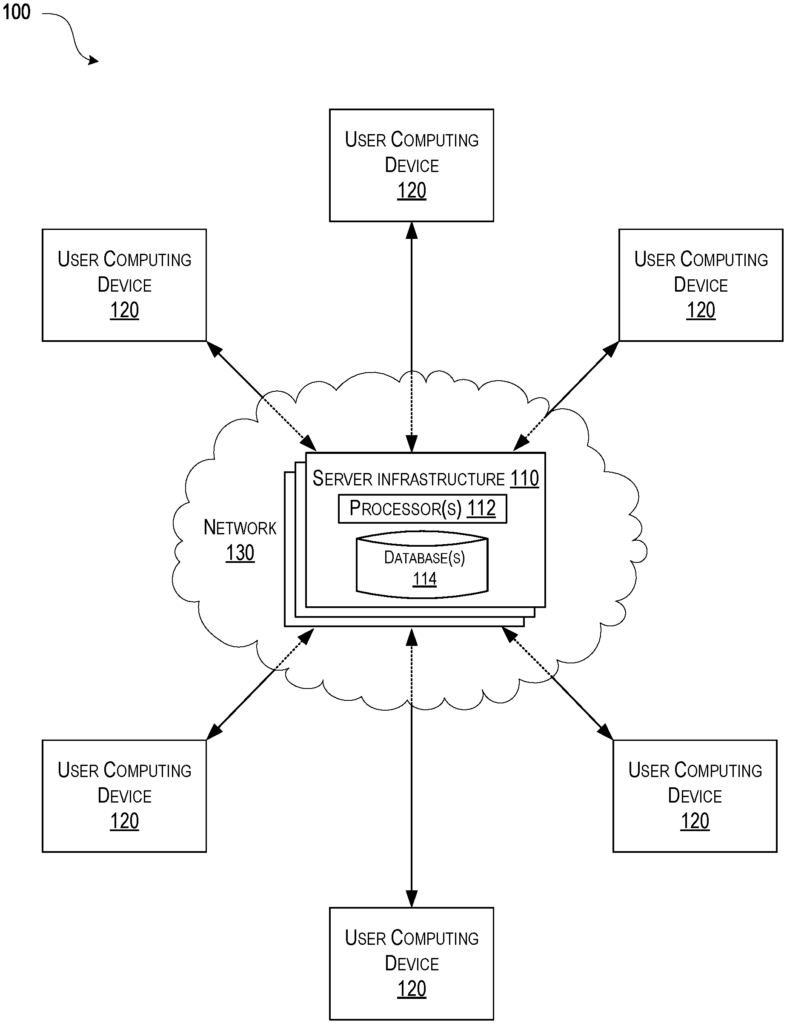
The Bank of America Corp invention works as follows
The present disclosure describes methods, systems and apparatuses that are based on blockchain technology for managing property. In a first embodiment, computing systems can be installed at multiple points in a supply-chain associated with the manufacturing, shipment and sale of physical property items. The plurality computing systems can identify the data that corresponds to each physical property item at the various points. This data may then be stored in a blockchain connected to a peer-to-peer network (e.g. P2P). In a second embodiment, the content creator computing systems may send digital property item upload requests from a digital asset management computing device. The latter may then generate smart contracts that correspond to the requests. By executing the smart contracts, digital property items can be accessed and content creator computing devices may receive fees.
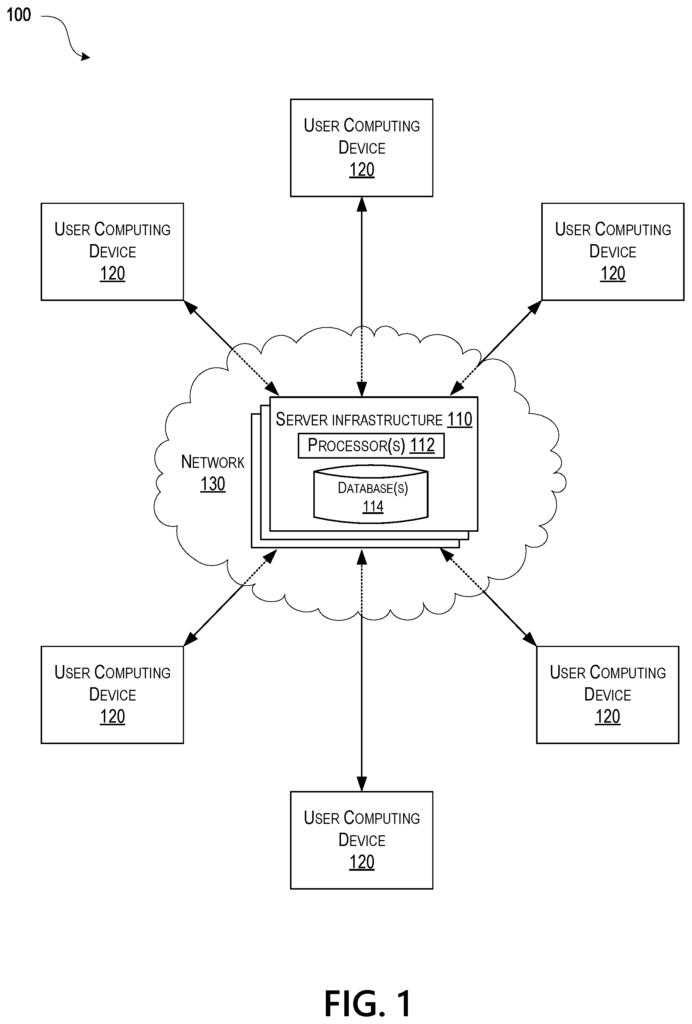
Background for Blockchain based property management
Centralized computing system can be used to manage both digital and physical property items. For physical property, centralized computer systems can receive information about the manufacturing, shipping, and selling of physical property from multiple entities. The physical property items can be altered and the information given by the parties along the supply chains may be manipulated to conceal any changes to the physical items. For digital property, centralized systems can receive digital content from multiple entities such as musical artists, filmmakers, graphic artists and others. They may then control the distribution of that digital content to the users of the system (e.g. content consumers) in exchange for a fee. The centralized computing system may pay royalties to content creators. These royalties may be calculated on a “one size fits all” basis, which lacks the finer details necessary to adequately compensate creators in relation to consumer engagement.
The following is a streamlined summary of the various aspects described in this document. This summary does not provide an exhaustive overview and is not meant to define the scope of claims or identify essential or required elements. This summary is a simple introduction to a more detailed description.
The aspects described in this specification are aimed at managing information related physical or digital property items using a blockchain. This is to overcome the limitations described above and other limitations that become apparent after reading and understanding the current specification.
According to one or several embodiments, the system can include a first computer system that includes one or multiple sensors, one- or two- or three- or four or five scanners and at least one first computing device, which is communicatively connected to the sensors and scanners. The first computing device could be configured to identify manufacturing data for a physical item by using the sensors of the system. The first computing device can scan a tag that is associated with the item of physical property using the one or multiple scanners in the first computing system to link the data identified with the item. The first computing system may transmit to a P2P decentralized network a network request, which includes the identified data. The system can include one or multiple nodes of the P2P decentralized network that are configured to execute one of more network protocols in order to generate a block for a blockchain within the P2P decentralized network.
In some embodiments the system can also include a second computer system with one or multiple sensors, one of more scanners and at least one second computing device that is communicatively connected to the sensors and scanners. The second computing device could be configured to identify shipment data for the physical item using the sensors of the second system. The second computing device can scan the tag attached to the first physical item using the scanners on the second computing system in order to link the shipment data and the physical item. The second computing system may transmit to the decentralized P2P networks a second network request, which includes the shipment data. One or more nodes in the decentralized P2P system may be configured with one or multiple network protocols that generate a second blockchain block, which includes the second network request.
In some embodiments, a property-management computing device may be included in the system to receive an information request from a computing device of the user corresponding to a physical property item. The property management computing device can identify the first and second blocks of the blockchain based on the information requested. The property management computing devices may transmit to the user computing devices the manufacturing data and shipment data.
In some embodiments, each of the first network request, second request for network functions, and information requests may include an identifier that corresponds to the physical item. The property management computing device can then be configured to search the Blockchain based on this identifier. The property management computing device can identify the first and second blocks based on the identifier that corresponds to the physical item.
In some embodiments the system can include a third computer system that includes one or multiple sensors, one- or two- or three- or four or five scanners and at least one third computing device, which is communicatively connected to the sensors and scanners. The third computing device could be configured to identify sales data for the physical item using the sensors of the third system. The third computing device can scan the tag attached to the first physical item using the one or multiple scanners in the third computing system. This will allow the sales data to be associated with that item. The third computing system may transmit to the decentralized P2P networks a third request for a network function, which includes the sales data. One or more nodes in the decentralized P2P system may be configured with one or multiple network protocols that generate a block of the blockchain for the decentralized P2P system, which includes the third network request.
In some embodiments, a first computing system can be linked to a manufacturing phase of a supply-chain, a second computing system with a shipping phase of the chain, and a third computing system with a sale stage.
In some embodiments, regulations or certification requirements may establish one or more of manufacture data, shipment data, or sales data.
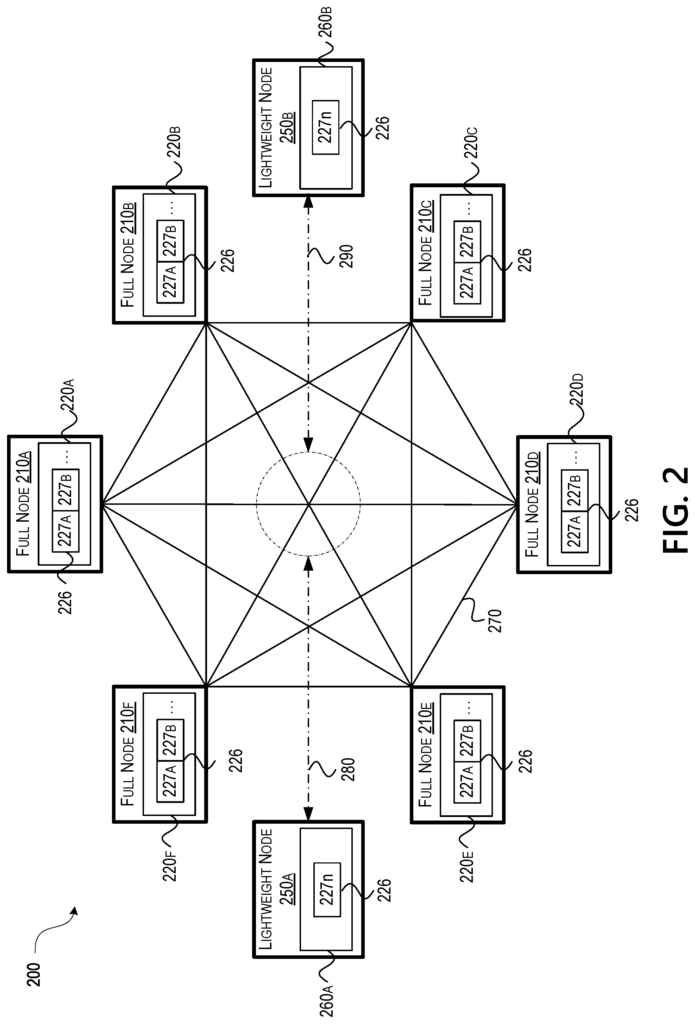
According to one or more embodiments, an computing device configured to work in a peer-to-peer network decentralized and with at least one processor and memory that stores at least a part of a blockchain within the network decentralized may receive a request for a digital item of property from at least one content creator computing device, where the request includes at least one item of digital asset. The computing device can generate a smartcontract based on the digital item upload request. This contract is designed to facilitate the transfer of the digital item from the blockchain onto one or more content consumer devices. The computing device can deploy the smart contracts to the decentralized P2P networks and add at least a portion of the blockchain to the decentralized P2P networks, the block containing the smart contract.
In some embodiments, a computing device can receive a digital item access request via the decentralized P2P and at least one content consumer computing device, where the digital item access request corresponds to the digital item of the smartcontract and includes a fee. The computing device can transmit the fee based on the digital item access request. The computing device can execute the smart contracts and, in response to execution of smart contracts, it may transmit the fee provided to at least one content consumer computing device to at least one content creator computing device. The computing device can transmit the digital item in response to transmitting the payment to at least one content consumer computing device.
In some embodiments, a fee is sent to a wallet on the computing device of at least one content creator, while the digital property item goes to the second wallet of at least one content consumer computing device.
In some embodiments, a digital property item upload requests further includes wallet data associated with each of several content creator computers and a percentage of creation responsibility corresponding to the content creator computer. The fee is then transmitted to the content creator computer based on wallet data and the creation responsibility percentage.
In some embodiments the digital property item includes at least one song, movie or e-book. It may also include a work of art.
In some embodiments the fee charged by at least one content consumer computing device corresponds to a download permanent of the digital item. The digital item is transmitted to at least one content consumer computing device, which includes the download permanent of the item.
In some embodiments the fee charged by at least one content consumer computing device corresponds to an item of digital property that can be downloaded only once. The digital property item is transmitted to at least one content consumer computing device, which includes the download.
The disclosures below will help you to understand these and other aspects.
In the description of various embodiments that follows, references are made to the accompanying illustrations identified above, which form part of this document, and where is illustrated various embodiments which may be used in order to practice the aspects described in the present invention. Other embodiments and structural and functionality modifications can be made to the present invention without departing from its scope. “Various aspects can be embodied in other ways and practiced or carried out differently.
As a general introduction to subject matter described below in greater detail, aspects described are directed towards apparatuses and systems for managing digital and/or physical property items using or on a blockchain.
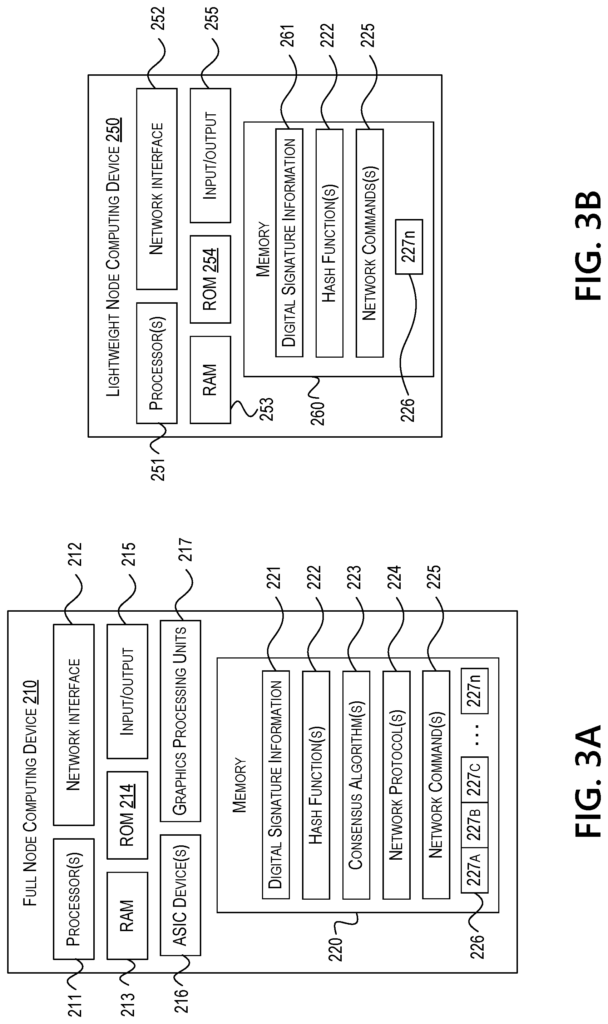
According to a first embodiment, a system for managing physical property can be configured by a plurality computing devices that operate along a supply-chain involving manufacturing, shipping, and selling the physical property. The physical property system may include lightweight node computing device installed at every point along the supply chains. The lightweight node devices can be configured to identify the information related to physical property items that correspond to the point along the supply chain where the lightweight node devices are installed, and to transmit network function requests containing the identified information to a P2P decentralized network of the Physical Property Management System. The network function requests may be data storage functions which, upon processing by full node computing device of the P2P decentralized network, will cause the identified information about the physical property items be stored on the blockchain of the P2P decentralized network. If the physical property items have been tampered at any point in the supply chain, the information about the tampering can be stored immutably on the blockchain. This allows information about the physical items to be preserved throughout the supply chain.
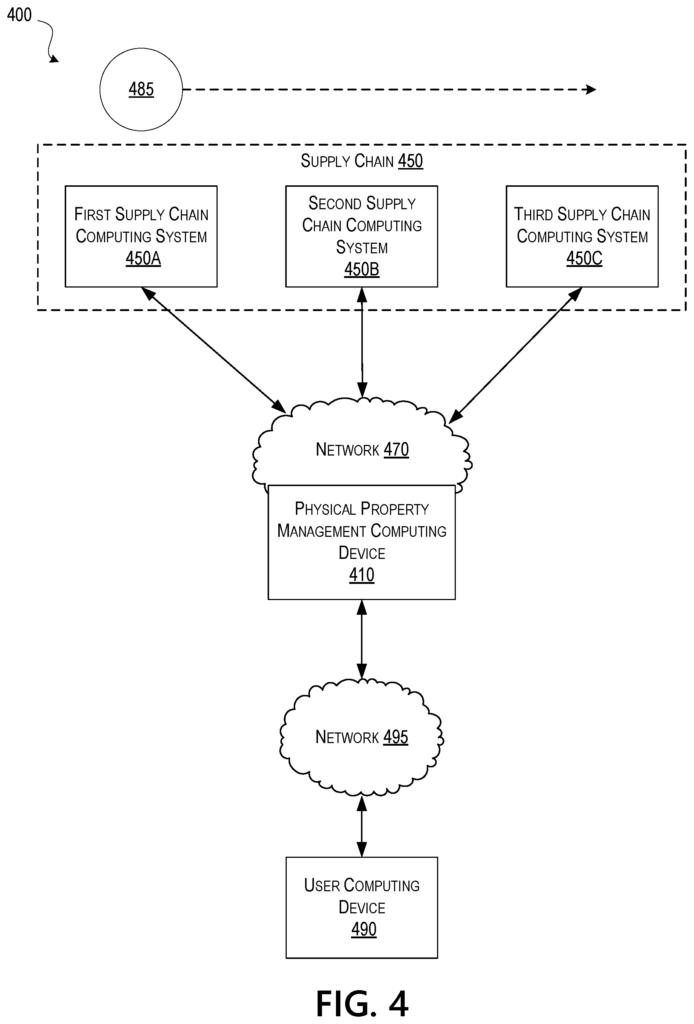
Click here to view the patent on Google Patents.
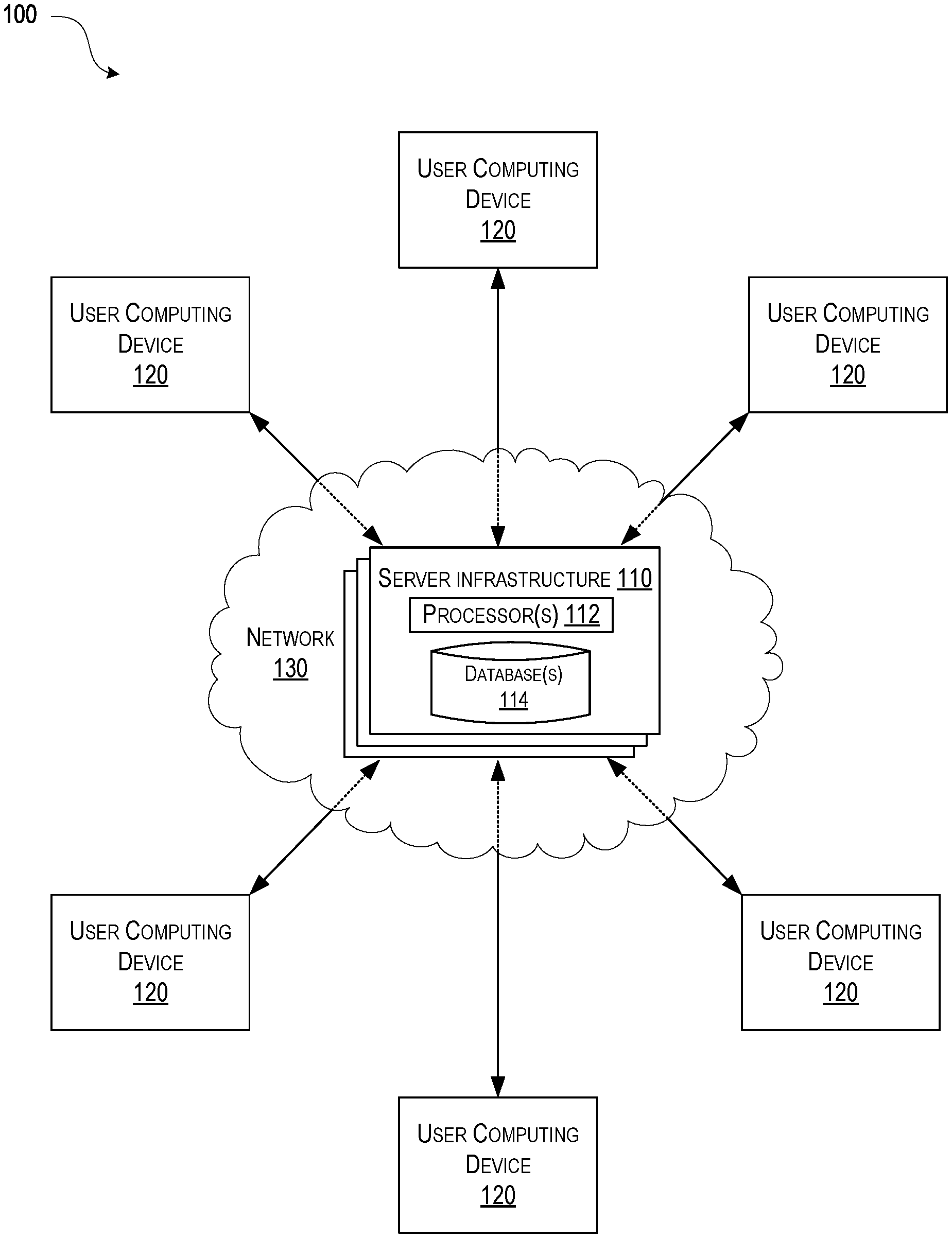
Leave a Reply